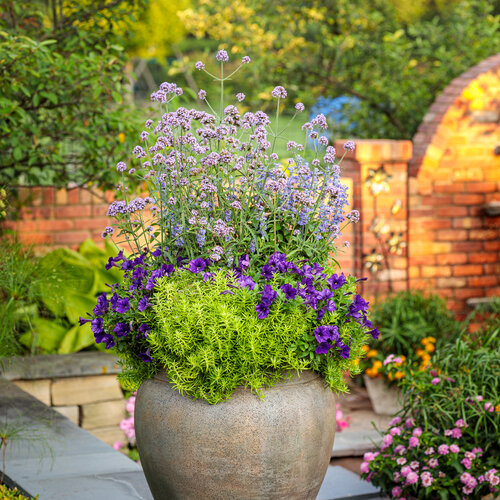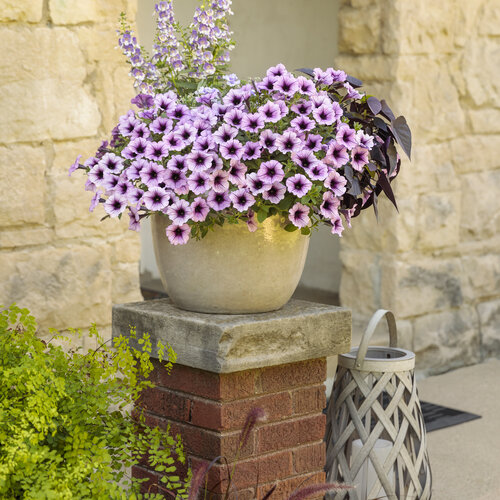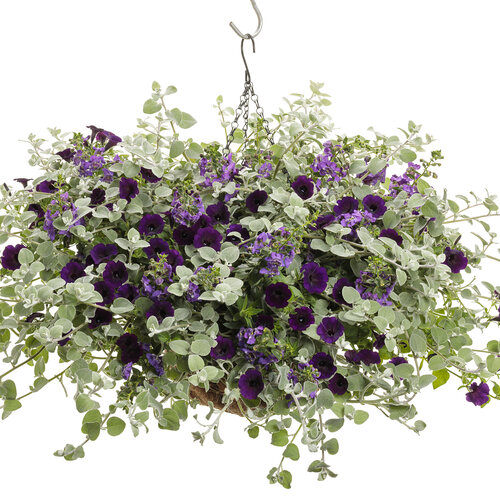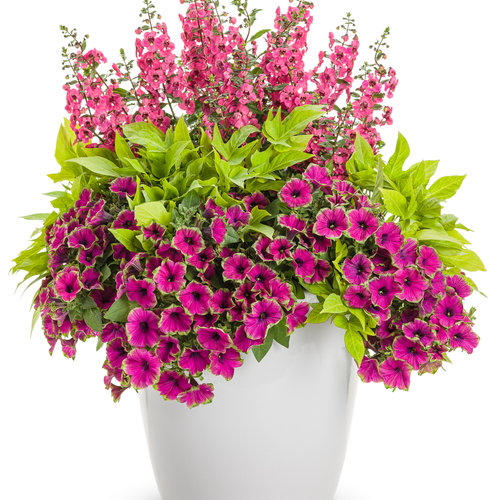8 Purple Petunias to Add to Your Landscape
Purple petunias come in a variety of hues, from pastel lavender to vivid magenta, complementing most other colors and suiting any mood or garden style.
Petunias are one of the best flowering annuals for adding long-lasting color to beds, borders, hanging baskets, window boxes and containers. For continuous color all summer long, grow these heat-tolerant purple petunia varieties on their own or alongside other plants and flowers.
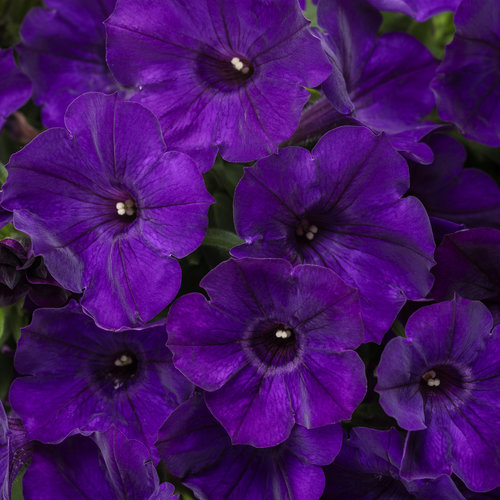 1. Supertunia® Royal Velvet® (Petunia hybrid)Large deep purple flowers and a vigorous trailing habit add a royal touch to containers and mass plantings. Combine with yellow, orange or chartreuse hues for dramatic contrast. The rich velvety blooms are sweetly fragrant, particularly late in the day. Hardy in zones 10-11, part sun to sun, 4-12” tall and 18-24” wide |
 2. Supertunia® Bordeaux™ (Petunia hybrid)Soft plum-pink flowers are accentuated with darker purple veins and a deeply colored eye. Combine this purple petunia with pastel shades of pale blue, cream or lavender for a sophisticated look. Use as a filler or spiller element in containers, as a ground cover or edging plant. Hardy in zones 10-11, sun or shade, 4-12” tall and 18-24” wide |
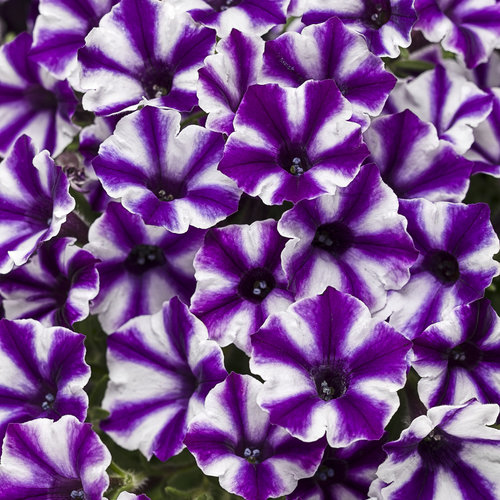 3. Supertunia Mini Vista® Violet Star (Petunia hybrid)Cheerful pinwheel blooms of dark purple and white create a striking bicolored effect in the landscape. Use this smaller flowered variety as a stand-alone accent, mass in a bed or border, or combine with plants that have complementary or harmonious hues. Hardy in zones 10-11, part sun to sun, 6-12” tall and 18-24” wide |
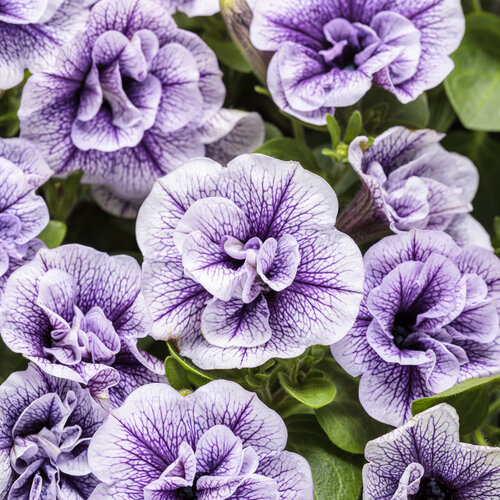 4. Supertunia® Priscilla (Petunia hybrid)This light purple petunia has large double flowers with deep purple veining. The delightfully fragrant blooms are self-cleaning, and vigorous new growth covers the older foliage, keeping plants fresh-looking all summer long. Plant in a container or hanging basket by itself, or combine with other plants with white or darker purple flowers for sophisticated elegance. Hardy in zones 10-11, part sun to sun, 6-12” tall and 18-24” wide |
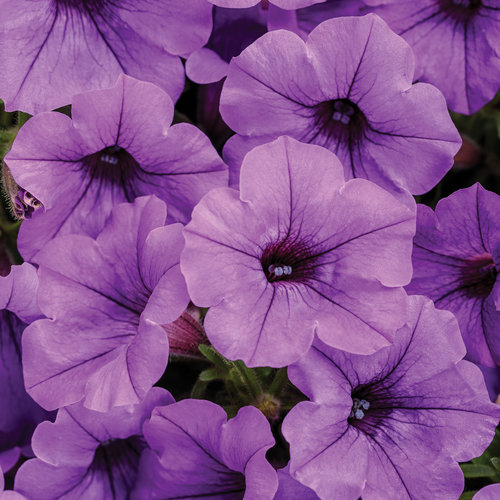 5. Supertunia Mini Vista® Indigo (Petunia hybrid)Rich purple-blue flowers with a dark eye bloom in profusion from planting until frost. Plant alongside yellow or orange flowers for a pop of contrast, or white, pink, or chartreuse for a cooling effect in the landscape. Use this trailer in hanging baskets, window boxes, or mass plantings. Hardy in zones 10-11, part sun to sun, 6-12” tall and 18-24” wide |
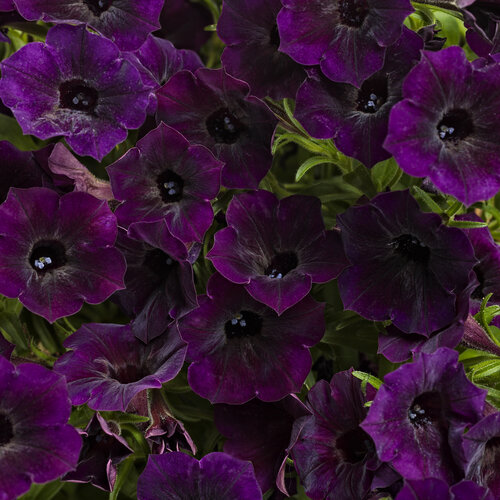 6. Supertunia Mini Vista® Midnight (Petunia hybrid)This dark purple petunia variety has velvety violet flowers with a nearly black throat, providing dramatic color all season long. Blooms are weather-resistant and self-cleaning, with durable plants that tolerate a range of growing conditions. Use this vigorous spreading variety in containers, hanging baskets or mass plantings. Hardy in zones 10-11, part sun to sun, 6-12” tall and 18-24” wide |
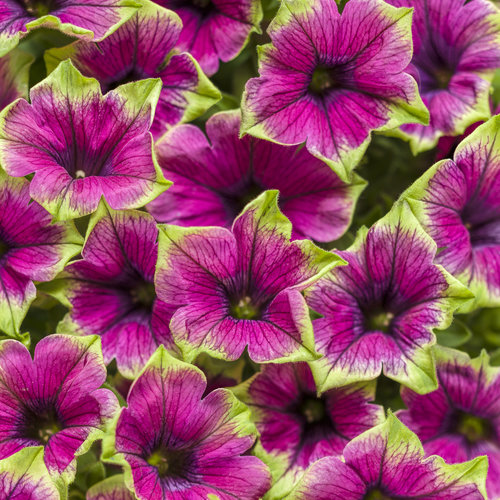 7. Supertunia® Picasso in Purple® (Petunia hybrid)Unique bicolor flowers are bright magenta with minty green edges for eye-popping contrast. The mounding trailing habit makes Picasso in Purple® suitable as a filler or spiller element in hanging baskets or containers. Mass in a border or along a slope, by itself or in combination with other flowering annuals. Hardy in zones 10-11, part sun to sun, 6-12” tall and 18-24” wide |
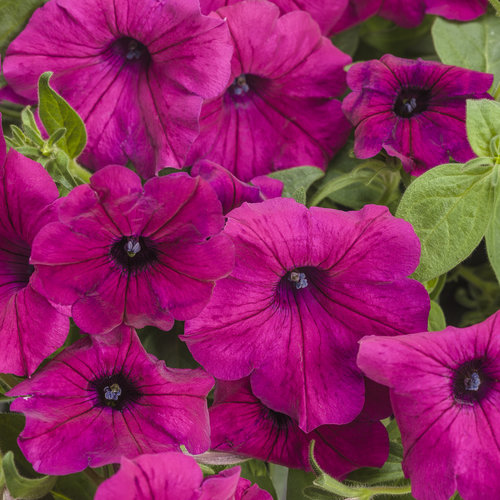 8. Supertunia® Royal Magenta (Petunia hybrid)Large blooms are brilliant magenta, adding bold color to beds, borders and containers. This versatile purple petunia flower combines well with many other stronger hues including orange, yellow, chartreuse or deep violet. Vigorous plants bloom prolifically throughout the growing season. Hardy in zones 10-11, part sun to sun, 4-12” tall and 18-24” wide |
Ideas for Using Purple Petunias in Your Landscape
- Mass 3 to 5 plants of the same purple petunia variety in a bed, border or along a slope for greater visual impact.
- Plant trailing purple petunias as a spiller element in hanging baskets, containers or window boxes. Combine with a thriller element such as angelonia, salvia or coleus. Round out the combination with a filler plant such as zinnia, sedge, euphorbia or lantana.
- Use purple petunias as a ground cover in a garden bed in combination with canna lilies, hardy banana, elephant ears, coleus and lantana for a colorful tropical look.
- Purple petunias can be used as a spreading ground cover to quickly fill in gaps in established beds where a splash of long-lasting color is needed.
- Place hanging baskets along a front porch and alternate purple petunias with other colored flowers for a captivating display all summer long.
- Plant purple petunias along the top of a rock wall or raised bed so they can cascade over the edge for a dramatic display of color.
Related: Petunia Hanging Baskets
Petunia Combinations
Complementary colors create contrast and visual excitement, while harmonious colors evoke serenity. The primary complementary colors of purple are orange and yellow, with secondary colors being green and chartreuse. Harmonious colors for purple are blue and pink. Neutral hues of white, gray, silver and brown can be used to tone down other colors. Use these basic color theory principles when combining purple petunias with other plants.
Click through for plant lists so you can try these purple petunia combinations in your yard:
FAQ’s
Do petunias come in colors other than purple?
There are many different shades of purple petunia blooms, from deep violet to pale lavender, as well as bicolor, picotee and veined patterns. Plus, petunias come in a wide variety of other colors, including pink, white, yellow, red and more.
What do purple petunias symbolize?
Flowers and colors each have their own unique symbolism. The color purple is associated with royalty and wealth, also symbolizing prestige, strength, creativity and harmony. Purple petunia meaning can embody a wide range of concepts, including fantasy, mystery, grace, respect and admiration.
How do you take care of purple petunias?
These flowering annuals thrive during the warmer months of spring and summer. It’s easy to grow petunias when they are given the right conditions. Grow petunias in a site with full sun to partial sun and moist well-drained soil. Provide regular water and fertilizer for the best growth and flowering.
What grows well with purple petunias?
Petunias go well with a wide variety of annuals and perennials with similar growing needs. Combine purple petunias with complementary hot colors or cool pastel hues, depending on the mood you want to create.
What about Mexican petunia?
Although not a true petunia, Ruellia simplex has lavender petunia-like flowers and an upright shrubby habit. This tropical plant thrives in southern gardens, blooming prolifically in areas with hot days and warm summer nights. They thrive in wet or boggy soil and are heat and drought-tolerant.



